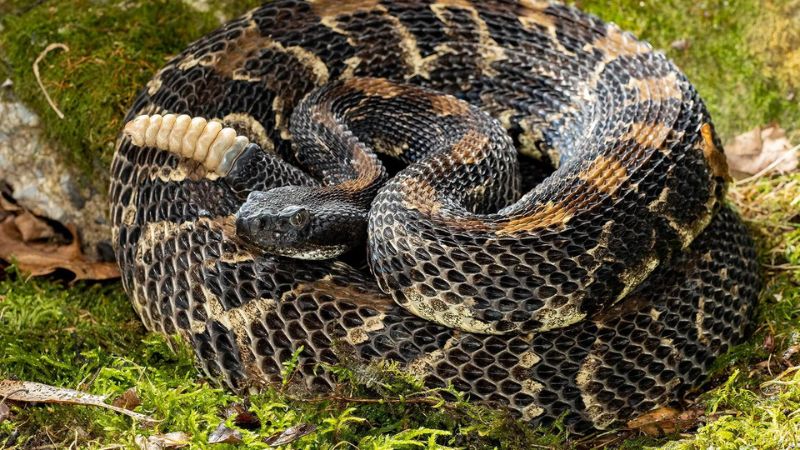The discovery of a record-breaking timber rattlesnake sheds light on this impressive reptile’s fascinating characteristics and crucial role in its ecosystem. Timber rattlesnakes (Crotalus horridus) are among North America’s most notable venomous snakes, known for their significant size and ecological impact. Here’s a closer look at various aspects of these remarkable creatures.
Size and Weight

Timber rattlesnakes are among the largest venomous snakes in North America, typically measuring between 3 to 5 feet in length. However, exceptional specimens can reach up to 6 feet or more, showcasing their impressive size. This record-breaking discovery highlights the potential for these snakes to grow even larger under optimal conditions.
Habitat and Range
Primarily found in the eastern United States, timber rattlesnakes range from Texas to Minnesota in the west and from Vermont to northern Florida in the east. They prefer deciduous forests and mixed woodlands, where they can find ample prey and suitable hiding spots. This extensive range and diverse habitat preference underline their adaptability and ecological significance.
Venom and Behavior
Timber rattlesnakes are venomous, using their hemotoxic venom primarily to immobilize prey such as small mammals and birds. Despite their potent venom, these snakes are generally shy and non-aggressive toward humans. They prefer to avoid confrontation and use their venom mainly for hunting rather than defense.
Rattles and Identification

Named for the distinctive rattle at the end of their tail, timber rattlesnakes use this feature as a warning signal when threatened. Each time the snake sheds its skin, a new segment is added to the rattle, providing a rough indication of age and shedding frequency. This unique characteristic makes them easily identifiable and adds to their mystique.
Conservation Status
Timber rattlesnakes face significant threats from habitat loss, road mortality, and illegal collection. Consequently, they are listed as a species of concern or are protected in several states throughout their range. These protections aim to ensure their survival and mitigate the various dangers they face in the wild.
Reproduction and Lifespan
Females typically give birth to live young every two to three years, with litter sizes averaging around 4 to 10 offspring. Timber rattlesnakes can live up to 30 years or more in the wild, depending on factors such as predation and environmental conditions. Their reproductive patterns and longevity contribute to their population dynamics and overall survival.
Ecological Role

As apex predators, timber rattlesnakes play a crucial role in their ecosystems by controlling populations of rodents and other small mammals. Their presence helps maintain a balance within the food web, highlighting their importance in sustaining ecological stability and health.



